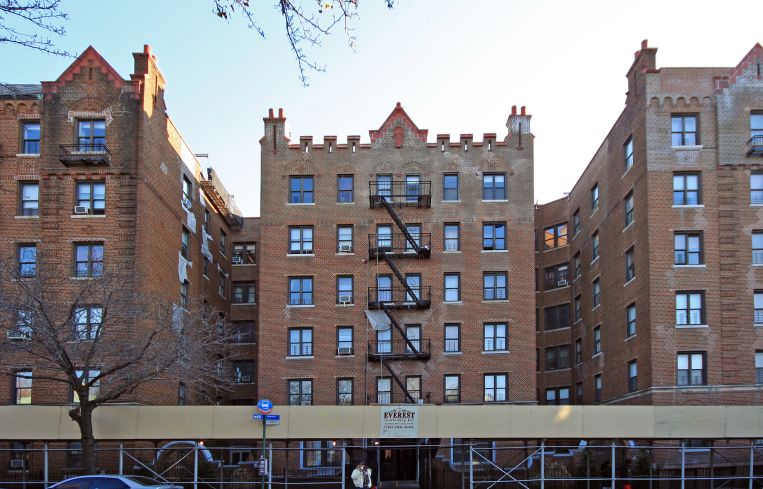Flood of New Rental Inventory Hits the Market as Rents Fall
By Rebecca Baird-Remba May 21, 2020 4:28 pm
reprints
The spread of coronavirus through New York City and the ensuing lockdown measures have shaken the city rental market in a way that has not been seen since the Great Recession, with New Yorkers fleeing the five boroughs to avoid the virus or save money after losing their jobs.
Leasing and new rental inventory hit record lows in late March and April after Gov. Andrew Cuomo imposed stay-at-home measures on New York State, which prohibited real estate brokers from showing apartments in person. Listing website and data aggregator StreetEasy released data Tuesday showing that new rental inventory has risen from 1,750 listings during the last week of March to nearly 5,000 listings the week ending May 10.
Median rents in Brooklyn and Queens hit record highs in February just before the pandemic struck, reaching $2,755 and $2,215 respectively, according to StreetEasy’s monthly market report for February.
StreetEasy economist Nancy Wu cautiously predicted that the new listings might mean the rental market was rebounding. However, she pointed out that with fewer interns and new college grads coming to the city this summer, the typically hot summer rental market may be sluggish. The potential slowdown would coincide with higher vacancies as New Yorkers flee the coronavirus pandemic. And the city could see an economic slowdown that would rival the 1970s, losing up to 475,000 jobs in the 12 months, according to the New York City Independent Budget Office.
Meanwhile, asking rents on new listings have been declining since lockdown began in the city. Of rental listings that were on the market when the governor issued the PAUSE order and are still available, 70 percent of them have slashed their prices, according to listings site Localize.city. Brooklyn saw the biggest drop in average asking rents—about 3 percent—between late March and now, according to Localize data analyst Nitzan Alkobi.
Within Brooklyn, Crown Heights and Prospect Heights both saw 5 percent drops in listing rents, which were the largest in the borough. Average asking rents in Crown Heights were about $3,137 before quarantine and declined to $2,996 by last week. Prospect Heights experienced a decline from $3,733 in late March to $3,564 as of last week. Average asking rents in Manhattan declined 2 percent over the course of quarantine, while Queens saw only a 0.7 percent drop.
The higher end of the rental market might be more stable because wealthier people are less likely to lose their jobs right now, said Localize CEO Steven Kalifowitz. The middle segment of the market was similar, he said, but it might see some churn as people lose their jobs and move to cheaper apartments. The lower end of the rental market could “get hollowed out” as low-wage workers struggle to pay their rent amid staggering job losses, he speculated.
Jonathan Miller, who runs real estate appraisal firm Miller Samuel, agreed. “The low end of each segment of the market has been more challenged in this market,” he said. “Therefore there’s a higher probability that there’s negotiating on existing leases, whether it’s a deferral or a short-term discount off of existing rent. And that information is not in the public domain at all.”
His April market report, which incorporates data from Douglas Elliman and the Real Estate Board of New York’s Multiple Listing Service, found that discounts on Brooklyn listings in April had increased 1.1 percent compared to April last year. Manhattan listings saw a 0.6 percent increase in discounts compared to the same time last year.
The number of new leases signed in April also cratered, reaching the lowest level since the Great Recession. Leasing declined 71 percent year-over-year in April for Manhattan, from 4,831 leases signed in April 2019 to 1,407 in April 2020. Brooklyn experienced a 69 percent year-over-year drop in new leases—to 439 from 1,323 last April—along with a 28 percent slide in new rental inventory.
“We had a pullback in listings,” said Miller. “And as the stay at home restrictions are lifted, there’s going to be a large amount of new inventory and that is going to soften rents. It’s already occurring. It’s all pegged to how quickly the economy rebounds.”
He noted that the dramatic decline in leasing had distorted his data somewhat, because the leases signed represented a much smaller fraction of the market than normal. It reflected the fact that many tenants were simply staying in place and renegotiating their leases rather than finding a new place.
“The landlord and tenant are stuck together because of shelter in place, and if the tenant leaves, there’s no sure thing that the landlord will be able to find a new tenant,” he said. “This is not a virtual rental world.”


